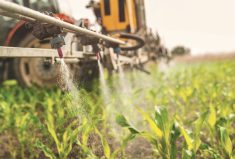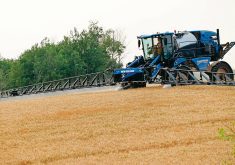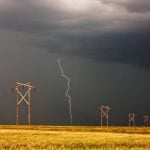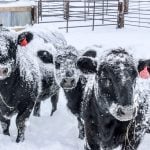A single drone can fly into rough terrain and spray herbicide on hard-to-reach patches of weeds.
Fly three of the largest in tandem and they have the airborne equivalent of a 100-foot spray boom, say proponents, with a cost one-quarter to one-third that of a 100-foot boom.
Welcome to the world of drones that can spray, seed and fertilize. They’ve been the toast of “drone schools” presented by Edmonton-based LandView Drones throughout the province.
Read Also
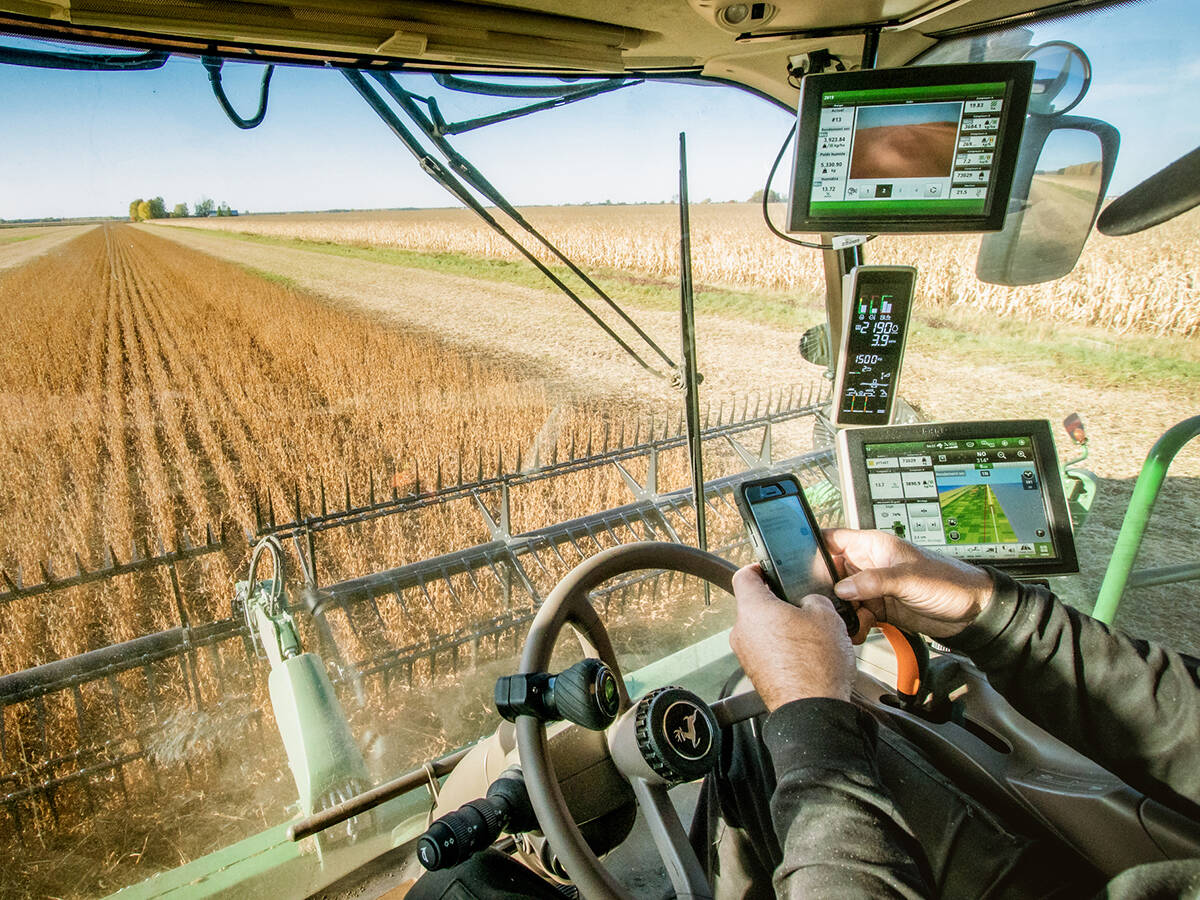
Older farm technology may risk hacker attack
A farm’s older internet-connected control systems — in one recent case, grain dryers — can let hackers in to wreak havoc.
[RELATED] FROM TOY TO TOOL: The sky’s the limit for farming drones
“You can do spot spraying in areas that are a little bit harder to get and you can be a lot more prescriptive with your approach to weed control,” said Greg Paranich, ag field specialist with the Grey Wooded Forage Association, which hosted a drone school in Benalto earlier this month.
“It’s like a lot of innovations. There are things that seemed crazy 10 years ago, kind of crazy five years ago but today it’s getting to be mainstream. I think we’re starting to say that it’s not such a crazy idea as we thought.”
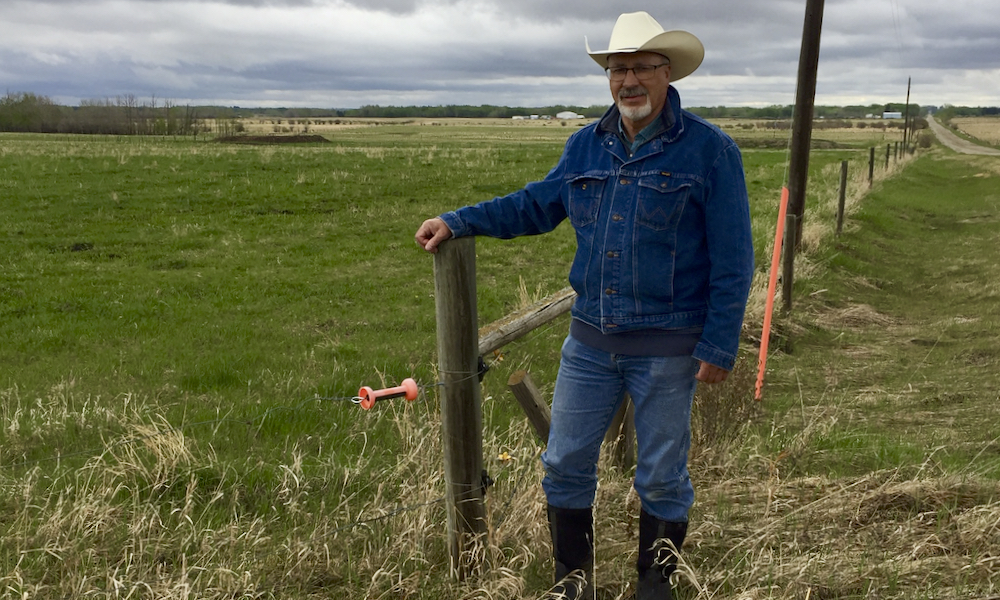
But there’s something farmers need to know before they go shopping.
Although drones can be used in Canada for seeding and fertilizing, using them to spray crop protection products is a no-no under Pest Management Regulatory Agency rules.
The agency is testing these drones for their spray drift potential, said Markus Weber of LandView Drones.
“You can apply products that aren’t regulated under the Pest Control Products Act,” he said. “But as soon as you want to spray any pesticide, herbicide or fungicide, there is basically a complete ban by the PMRA. The only exception is application under a research authorization.
“That hasn’t stopped people from applying (crop protection products) anyway. There are people applying product that I’m aware of. Not me, but there are farmers out there that are spraying.”
[VIDEO] A high-flying concept unites with AI
The regulatory limitations will eventually be ironed out, said John Church, a leading drone researcher with Thompson Rivers University in Kamloops, B.C.
“I will be surprised if they’re not commonplace within the next five years just because it’s so much more affordable and the technology is there.”
While some producers have embraced niche uses (brush control on rough pasture, for example), it’s the price point that has captured farmers’ imaginations the most, said Weber.
The smallest of these drones, able to carry eight litres of product, costs about $25,000 for a whole package. The largest model (40 litres) costs more than $42,000 and works with both granular and liquid products.
“Just for a point of comparison, a 100-foot ground sprayer could be replaced by three of these 40-litre models in terms of field efficiency,” said Weber. “The hardware cost on those three drones is about $125,000. There are very few 100-foot sprayers available for less than $600,000 or $700,000.”
The drones typically fly 2.5 to 3.5 feet above the crop.
“You need some altitude because most of them have a design where the nozzles are underneath the propellers,” he said. “The air from the propellers themselves is used as a mode of distribution, a virtual boom essentially.
“I’ve heard of people going to 10 metres but that’s more for spreading than it is for liquid products.”
Users of these drones can’t expect the efficiency of the large product tanks that are part of most conventional sprayer setups. Batteries and water have to be replaced several times a working day and each instance of down time is about two minutes.
“It’s a constant ‘stop to refill, stop to refill’ all day long,” said Weber.
[RELATED] Country Guide: Low-clearance spraying
The most popular brand names in this category include Chinese company DJI, American company Hylio and an Ontario company called Forward Robotics.
The DJI as “the 800-pound gorilla in the drone world,” said Church.
Although Canadian producers are not allowed to use drones for spraying, researchers are. The situation is flip-flopped in the U.S.
“The U.S. is quite nervous because it’s a Chinese company,” said Church. “No government researcher is allowed to use DJI drones, but Canada doesn’t seem to have those concerns so it’s a lot easier to use them if you’re a government researcher or what have you.
“But right now the U.S. has the approval to spray and we don’t. I go online and I see there are all types of people that are posting YouTube videos using these drones for spraying in the U.S. I think it’s really a competitive disadvantage for us not to have this ability.”
Paranich said drone schools like the one in Benalto help farmers get a better feel for flying drones.
“Some of the producers were so intimidated and so reluctant (on the first day) they were like ‘I don’t want to touch this because I might break something,’” he said. “But they just took to it like a duck to water. They were just having too much fun to worry about getting into trouble.”
By the second day of the two-day school, the nervousness had disappeared.
“The next day when we went outdoors those same people who were really intimidated were flying some of the biggest drones that they had. They were flying them way out and gone.”
The Grey Wooded Forage Association tries to hold events that can help producers adopt valuable practices for their operations, said Paranich.
“I was really pleased to see that the people had gained confidence and a realization that this could be something they could see using on their farms.”





